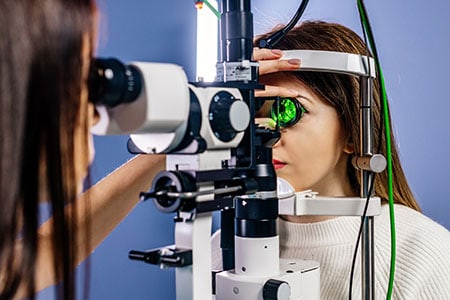Featured
Table of Contents

Normal eye exams are vital for preserving excellent vision and finding prospective eye wellness problems early. The frequency of these examinations can vary substantially based on an individual's age, way of life, and total wellness. Comprehending the recommended timetable for eye tests can assist ensure that people of every ages receive suitable treatment and tracking for their eye wellness.
Newborns and Toddlers (0-2 Years)
For babies and toddlers, eye exams are critical for discovering any potential vision problems at an early stage. The American Academy of Ophthalmology suggests that a kid's very first eye test need to happen at around six months of age. Throughout this first check out, the eye care expert will certainly analyze the child's visual advancement and check for any kind of evident eye issues.Following this first examination, it is advised that youngsters have another eye examination at age three. This check out will focus on assessing the youngster's general aesthetic feature, including eye alignment and the capability to track things. If no problems are found, the following exam ought to be set up prior to the child starts school, typically around age 5 or 6.
School-Aged Kids (6-18 Years)
As soon as youngsters get to institution age, routine eye tests ought to be arranged each to 2 years. Vision is important for learning and development, and lots of schools conduct vision screenings. These testings do not replace a comprehensive eye test by an eye treatment expert.For kids associated with sporting activities or tasks needing significant visual focus, annual eye exams might be recommended. Additionally, if a youngster shows indicators of vision problems-- such as problem reading, scrunching up your eyes, or constant frustrations-- a browse through to the eye doctor must be set up asap.
Young Person (19-39 Years)
Young person normally have less vision adjustments than older age, however regular eye examinations remain necessary. The basic suggestion is to arrange an eye exam every 2 years throughout this duration. Individuals with certain danger variables-- such as a family history of eye illness, diabetes, or those that put on get in touch with lenses-- should take into consideration annual eye examinations.In addition, those who spend significant time on electronic devices might experience electronic eye strain. If signs such as dryness, exhaustion, or blurred vision occur, it might be smart to see an eye care professional faster.
Adults (40-64 Years)
As individuals enter midlife, the chance of establishing vision issues rises. Adults aged 40 to 64 ought to set up eye exams each to two years. This age might begin to experience presbyopia, an all-natural age-related problem that makes it challenging to concentrate on close things. Eye examinations can also assist discover various other common age-related conditions such as glaucoma, cataracts, and macular deterioration.If people in this age have threat factors like high blood pressure or diabetes, they may require even more frequent assessments to monitor their eye health and wellness closely.
Seniors (65 Years and Older)
For senior citizens, regular eye exams become also a lot more critical. The American Optometric Organization recommends that people matured 65 and older have an eye exam at least once a year.Final thought.
Comprehending the proper timetable for eye tests based on age is important for maintaining ideal eye wellness throughout life. From babies to seniors, routine eye evaluations play an essential function in detecting problems early and guaranteeing that vision remains sharp. By adhering to these guidelines and talking to an eye treatment professional, people can take aggressive steps towards maintaining their vision and overall health and wellness. Whether it's a child's initial see or a senior's annual exam, prioritizing eye care is an investment in long-lasting well-being.Table of Contents
Latest Posts
Choosing the Right Location: What to Consider for Wedding Celebrations, Conferences, and Occasions
Published Mar 20, 25
1 min read
Choosing the Right Venue: What to Take into consideration for Weddings, Meetings, and Occasions
Published Mar 09, 25
1 min read
Furnishings Styles Living Area
Published Jan 28, 25
0 min read
More
Latest Posts
Choosing the Right Location: What to Consider for Wedding Celebrations, Conferences, and Occasions
Published Mar 20, 25
1 min read
Choosing the Right Venue: What to Take into consideration for Weddings, Meetings, and Occasions
Published Mar 09, 25
1 min read
Furnishings Styles Living Area
Published Jan 28, 25
0 min read